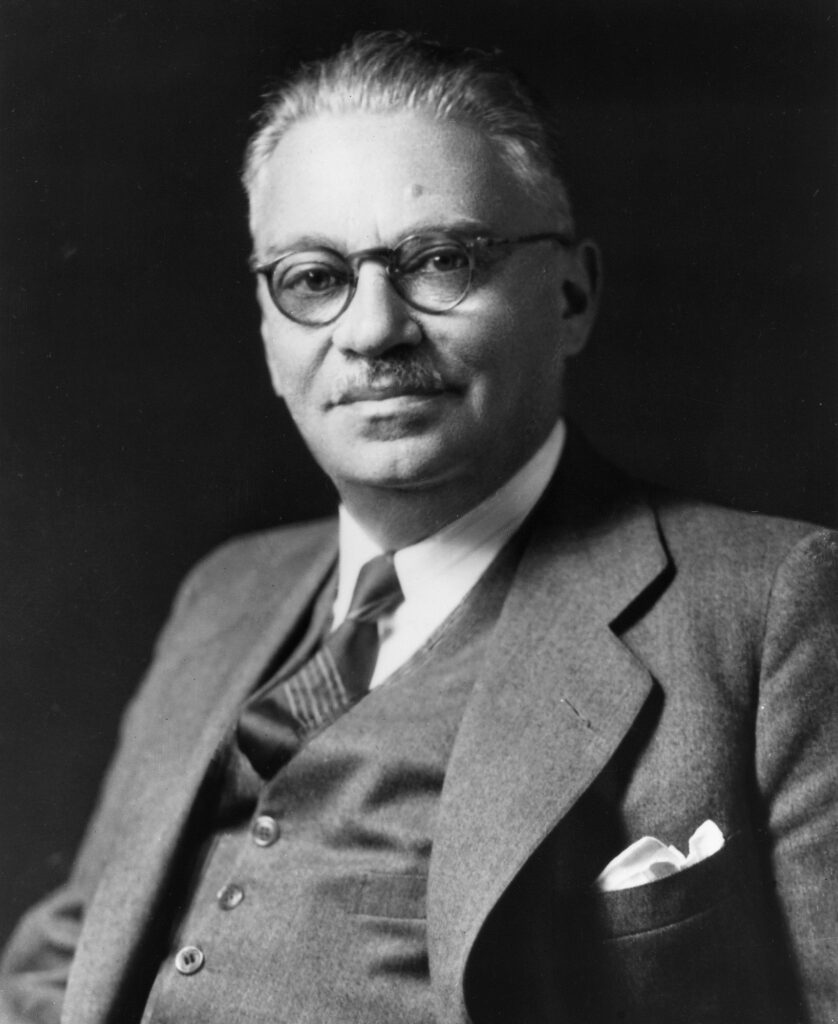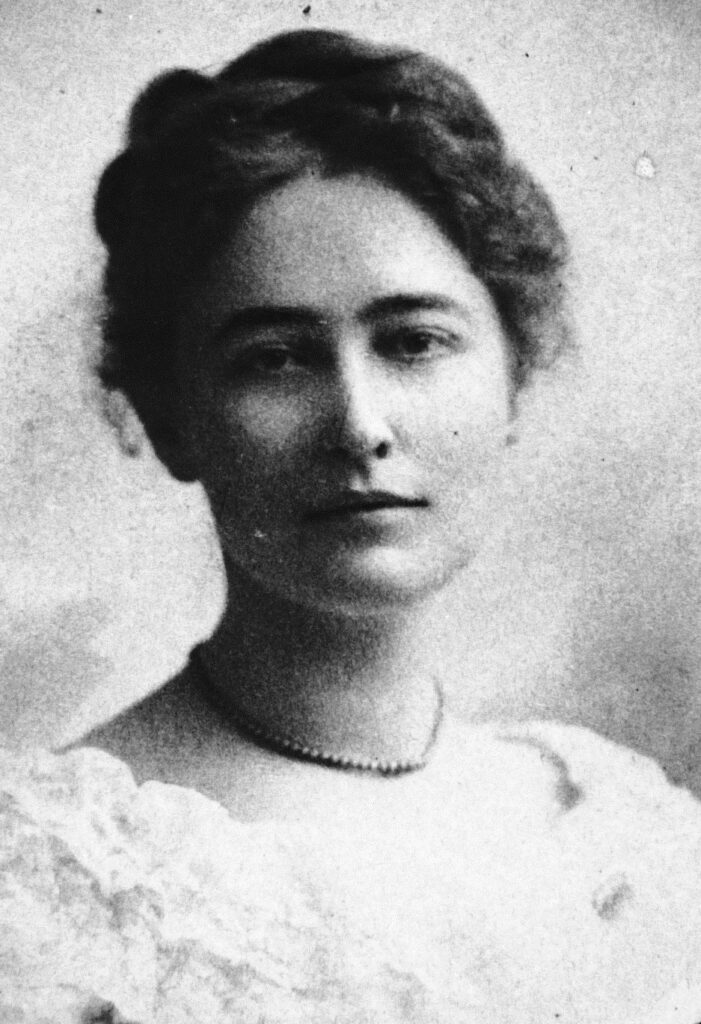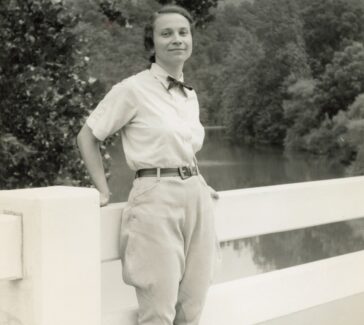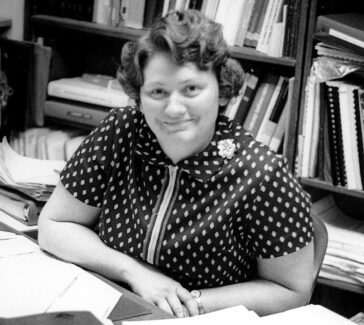Leonor Michaelis and Maud Leonora Menten
In 1912 Michaelis and Menten published their seminal work on enzymes—almost all of which are proteins. Their research cast new light on these complex compounds that make possible the chemical reactions of life.

Enzymes—complex molecular machines, most of which are proteins—work on a variety of other molecules, called substrates, to facilitate such changes as transfer of electrons (oxidation and reduction), molecular rearrangements, and water removal. Life goes on only because of the action of enzymes.
The more scientists understand the workings of enzymes, the better they understand the complex array of reactions that make up the web of life, in healthy and in diseased states. Seminal work published in 1912 by Leonor Michaelis (1875–1949) and Maud Leonora Menten (1879–1960), a German man and a Canadian woman, cast light on the reasons why enzymes are so efficient.
Early Research on Enzymes
The substances that came to be called enzymes were already being studied some 75 years earlier. In 1835 Jöns Jakob Berzelius recognized that some substances in living bodies cause chemical reactions but do not themselves undergo change. He named them catalysts from the Greek word katalyein, meaning to loosen or dissolve. Such substances were also called ferments, which came in two varieties: those that required the existence of a living body, like yeast, for their activity, and those that did not. In 1876 Willy Kühne coined the word enzyme (from the Greek word enzymos, meaning “in yeast”), which Eduard Buchner later applied to both sorts of ferments, since in 1897 he succeeded in extracting a substance from yeast ground with sand that continued to support fermentation. In 1894, in the course of his work on sugars, Emil Fischer noted the specificity of enzymes—that each enzyme works only with a specific substrate.

An MD Turned Researcher
Leonor Michaelis received his medical degree at the University of Berlin in 1897, making clear his interest in research by doing an embryological study rather than a clinical study to complete his requirements. Immediately thereafter he wrote a brief textbook on embryology, which was well received and went through several editions.
The year after graduating he worked as an assistant in Paul Ehrlich’s laboratory in Frankfurt, where he studied the interaction between aniline dyes and the chemical constituents of living tissues. Michaelis also discovered a dye that specifically stained certain crucial components, later called mitochondria, of the cells that make up living tissue. In the same year he took up the study of the then new subject of physical chemistry, which he was confident would have important applications in biological studies.
Early Work with Enzymes
Michaelis followed Ehrlich’s advice to pursue clinical studies, since finding support for fundamental research was so difficult. After five years of clinical work at Berlin hospitals, Michaelis was only able to obtain a courtesy appointment at the University of Berlin. He felt that as a Jew he would have little opportunity for advancement at the university, so in 1905 he accepted a position as bacteriologist at one of Berlin’s municipal hospitals.
There he and a friend, chemist Peter Rona, set up a small research laboratory and conducted studies on the role of hydrogen-ion concentration in determining the properties of proteins and enzymes. These studies were similar to but independent of the work being done by the Danish chemist Søren Sørensen. Michaelis also studied how small molecules adhere to the surface of various proteins and enzymes. He then tried to understand the relation between the rate of formation of product to the concentrations of enzyme and its substrate—that is, its efficiency in getting its work done.
The Michaelis-Menten Equation

In the early stages of this work he was joined by Maud Menten, one of about 40 coworkers who were attracted to his modest laboratory during the period of its operation, from 1905 to 1921. (A subsequent postdoctoral worker was Albert Szent-Györgyi.) Menten had just received her MD in 1911 from the University of Toronto. Born in Port Lambton, Ontario, Canada, she completed her bachelor’s and master’s degrees at the University of Toronto and then worked a year at the Rockefeller Institute in New York before returning to the university for her MD.
Michaelis and Menten were able to express mathematically the relationship they were investigating, which demonstrated that each enzyme not only has its own substrate but also that at sufficient concentrations of substrate it has its own rate of causing that substrate to change chemically. One of the constants used in expressing this rate is now called the Michaelis-Menten constant. Much later, in the 1930s, their work was highlighted by J. B. S. Haldane, a British physiologist, biochemist, and geneticist. Michaelis went on to study how enzyme activity is inhibited, a topic later of great importance to the development of pharmaceuticals.
Menten’s Work in Medicine and Research
When Menten returned from Berlin, she enrolled at the University of Chicago, where in 1916 she obtained a PhD in biochemistry. Unable to find an academic position in her native Canada, in 1923 she joined the faculty of the medical school at the University of Pittsburgh while serving as a clinical pathologist at Children’s Hospital in Pittsburgh. Despite the demands of these two positions Menten maintained an active research program, authoring or coauthoring more than 70 publications. Although her promotion from assistant to associate professor was timely, she was not made a full professor until she was 70 years old, within one year of retirement.
Michaelis’s Proof of Formation of Free Radicals
Michaelis’s career continued on a similarly slow track compared with his earlier achievement. In 1921 he joined the staff of a Berlin manufacturer of scientific equipment, and in 1922 he accepted an appointment as a visiting professor at the Aichi Prefectural Medical School in Japan, which later became part of the University of Nagoya. After three years there he came to the United States for a lecture tour and afterward stayed for three years at the Johns Hopkins School of Medicine.
At the age of 54, he finally attained a permanent academic position, at the Rockefeller Institute in New York, where he again attracted a notable group of coworkers. There, with Ernst Friedheim, he made another important contribution to biochemistry, proving that the oxidation and reduction of organic substances often occurs in stepwise fashion, with the intermediate formation of free radicals. These structures contain one or more carbons with a single unpaired electron in addition to electron-pair bonds. At the time the notion of “free radical” was still very much the subject of skepticism.



